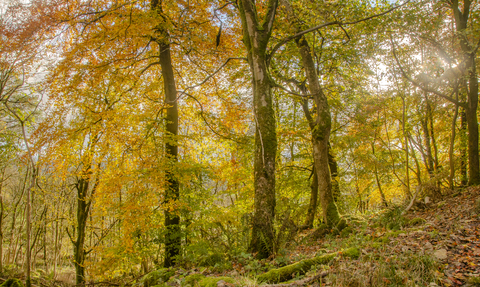

Snipe © Allen Holmes 2019
Upper Dunsforth Carrs Nature Reserve
Location
Know before you go
Dogs
When to visit
Opening times
Open at all times. We recommend a half day trip for this reserve. For a longer day out, combine with other nearby reserves - Bishop Monkton Railway Cutting, Burton Leonard Lime Quarries, Staveley and Ripon City Wetlands.Best time to visit
March to SeptemberAbout the reserve
Welcome to the Jungle! Tucked away on the outskirts of a small village and surrounded by farmland, Upper Dunsforth Carrs packs a lot of wild habitat into a small space: rush-pasture, swamp, wet woodland, and fen meadows.
In summer, the fen meadows are splashed with the pinks and purples of marsh orchids, purple loosestrife and ragged robin. You can enjoy the company of woodland and farmland birds like green woodpeckers and yellowhammers. Insects also abound – 120 beetle species have been recorded, including a nationally scarce diving beetle and a large click beetle.
Species
Contact us
Environmental designation
About
The permanently waterlogged soils over most of the site have produced a variety of wetland communities representing various stages in ecological succession. Where the vegetation is grazed by cattle, diverse rush-pasture fen-meadow, tall-herb fen and swamp have developed, whist ungrazed areas support willow and alder carr. At the south end of the nature reserve, the lighter sandier soil supports drier grassland, similar to the hay meadows that would have once covered much of the Vale of York.
The site has many bird species characteristic of the farmed landscape surrounding the site, such as chaffinch, greenfinch and yellowhammer. Snipe may be found in winter, along with mixed flocks of lesser redpoll and siskin, whilst reed bunting are present all year round. Green woodpecker are a noisy inhabitant of the nature reserve.
Over 120 species of beetle have been found on the site, including the nationally scarce diving beetle Agabus uliginosus and the large click beetle Ctenicera pectinicornis, which is an important indicator of damp grassland.
Seasonal highlights
- Spring: Birds - Great spotted woodpecker; Willow warbler; Willow tit
- Summer: Birds - Ragged Robin; Flag iris; Marsh orchid; Sedge warbler
- Autumn: Invertebrates - Migrant hawker; Common darter
- Winter: Birds - Snipe; Reed bunting; Lesser redpoll
Directions
Public transport
Bus services available to the village of Great Ouseburn from Boroughbridge, York and Ripon.
By car
Heading south on the B6265, three miles from Boroughbridge, turn left following signs for Upper Dunsforth. Turn left again and parking is on the left after 0.6 miles, before you reach the T-junction at the end. The reserve entrance is set a little back from the road.
From this entrance an accessible boardwalk is a 10-15 minute gentle walk (uneven under foot).
The best entrance to choose (shortest walk to the accessible boardwalk through the key wetland areas of the reserve) is via Green Lane which runs through the village of Upper Dunsforth. The entrance to the reserve is set back from the road, at the south east end of the village.
Thank you
Upper Dunsforth Carrs Nature Reserve is part of a section of land originally bought by Lewis Mellor Nicholl and his wife, Beatrice, formerly of Great Ouseburn. It was bequeathed to their daughter, Margaret, and her husband, Geoffrey Stead.
Having established its unique value as an SSSI, Margaret and Geoffrey leased this section of land to Yorkshire Wildlife Trust, leading to the creation of the Nature Reserve.
In recognition of the dedicated work carried out by the Yorkshire Wildlife Trust to manage and protect this site, Margaret and her family gifted the Reserve to the Trust in autumn 2023.
Margaret’s parents, Mellor and Beatrice, and her late husband, Geoffrey, would be as delighted as Margaret and her family are to know the future of Upper Dunsforth Carrs Nature Reserve is assured.

The autumn colours were even more beautiful when the sun came out
Photo Credit - Telling our Story Volunteer, Sara


